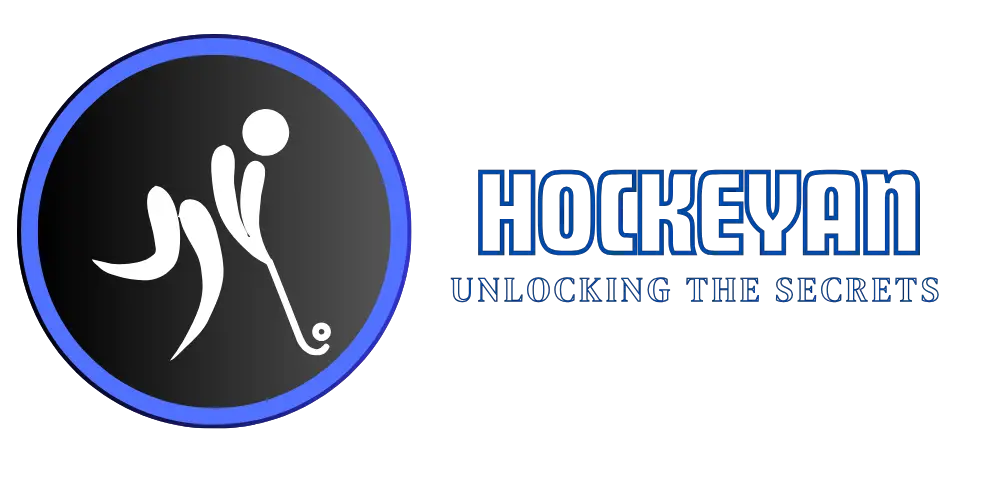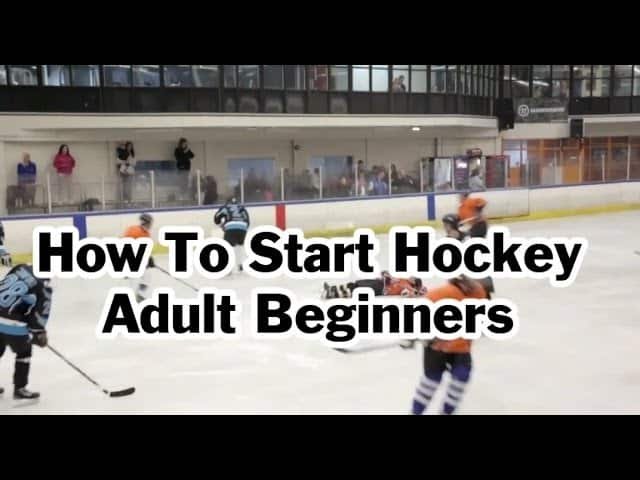What is a High Stick in Hockey? A high stick in hockey occurs when a player’s stick makes contact with the puck or another player above the height of the shoulders. This can lead to penalties or stoppages in play.
Hockey is a fast-paced sport with many rules. Understanding these rules can enhance your enjoyment of the game. One important rule is the high stick. This rule helps ensure player safety and fair play. Knowing what constitutes a high stick can help you follow the game better.
It also explains why certain penalties are called. This blog will explore what a high stick in hockey is, why it matters, and how it affects the game. This information is essential whether you’re a new fan or a seasoned viewer.
High Stick Definition
High Stick Definition is an important term in hockey. It refers to a specific rule about the positioning of the hockey stick. A high stick occurs when a player raises it above a certain height. This action can have serious consequences in a game.
Basic Concept
The basic concept of high sticking is simple. If a player’s stick is raised above the shoulders, it is considered a high stick. This rule is meant to prevent injuries. A high stick can lead to penalties. It ensures players keep their sticks low, maintaining safety on the ice.
Historical Background
The historical background of the high stick rule dates back to the early days of hockey. As the sport evolved, safety became a priority. High sticking was identified as a dangerous action. Early hockey did not have strict rules about stick positioning. Over time, hockey’s governing bodies introduced the high stick rule to reduce injuries.
Today, high sticking is a well-known rule in hockey. It is enforced strictly by referees. Players are trained to avoid raising their sticks too high. This historical evolution shows the sport’s commitment to player safety.

Credit: scoutingtherefs.com
High Stick Rules
High stick rules in hockey are crucial for player safety and game fairness. These rules dictate what constitutes a high stick and the penalties that follow. Understanding these regulations can enhance your viewing experience and knowledge of the sport.
Nhl Regulations
A high stick occurs in the NHL when a player raises it above the opponent’s shoulders. If the stick makes contact with another player, a penalty is called. The severity of the penalty depends on the impact of the high stick.
A minor penalty is given if the high stick does not cause injury. This results in the player serving two minutes in the penalty box. If the high stick causes injury, a double minor penalty is enforced. This means the player will serve four minutes in the penalty box.
In some cases, a high stick can lead to a major penalty. This applies if the action is deemed intentional or reckless. The player will be penalized with a five-minute penalty. Game misconduct may also be added, resulting in ejection from the game.
International Rules
International hockey rules for high sticking differ slightly from those of the NHL. The International Ice Hockey Federation (IIHF) governs these rules. High sticking in international games also refers to a stick raised above the shoulders.
A minor penalty of two minutes is given for unintentional high sticking. If the high stick causes injury, a double minor penalty is enforced. Like the NHL, this results in four minutes in the penalty box.
Intentional or reckless high-sticking leads to harsher penalties. A major penalty of five minutes may be given. Additionally, the player can face game misconduct penalties, leading to ejection from the game.
Understanding these rules helps fans appreciate the game’s safety measures. Awareness of these regulations enhances the viewing experience and respects the players’ safety.
Penalties For High Sticking
High sticking is a common infraction in hockey that occurs when a player plays the puck or checks an opponent with their stick above the shoulders. Depending on the severity and intent, this infraction can lead to different penalties. Understanding these penalties helps players and fans grasp the rules and consequences better.
Minor Penalties
A minor penalty for high sticking is typically assessed when a player’s stick makes contact with an opponent above the shoulders, but no injury occurs. The player who committed the infraction must serve two minutes in the penalty box. During this time, their team plays shorthanded, giving the opposing team a power play opportunity.
Minor penalties are common in hockey and are meant to discourage unsafe play. Here are some key points:
- Two-minute penalty for minor infractions.
- The team plays shorthanded for the duration.
- No injury to the opposing player.
Major Penalties
A major penalty for high sticking is given if the infraction causes injury to the opponent. The player responsible must serve five minutes in the penalty box. This penalty can significantly impact the game as the team plays shorthanded for an extended period.
Key aspects of major penalties include:
- Five-minute penalty for serious infractions.
- The team plays shorthanded for the entire five minutes.
- Infraction results in injury.
High sticking can sometimes lead to a match penalty, especially if the action is intentional or dangerous. This results in the player being ejected from the game.
| Penalty Type | Duration | Conditions |
|---|---|---|
| Minor Penalty | 2 Minutes | No injury to an opponent |
| Major Penalty | 5 Minutes | Injury to opponent |
Understanding the penalties for high sticking is crucial for both players and fans. It ensures the game is played safely and fairly.

Credit: en.wikipedia.org
Impact On Players
In hockey, a high stick can have significant consequences for players. It occurs when a player’s stick contacts an opponent above the shoulders. This can lead to injuries and disrupt the game.
Injury Risks
High sticks can cause serious injuries. Players can suffer from cuts, bruises, or broken bones. Facial injuries are common. They often lead to stitches or missing teeth. Eye injuries are especially dangerous. They can result in vision loss. Concussions are another risk. A high stick to the head can cause severe brain injuries.
Player Safety Measures
Safety measures are in place to protect players. Helmets with face shields are mandatory. They protect the face and head from high sticks. Visors help prevent eye injuries. Some players also wear mouthguards. These reduce the risk of dental injuries.
Referees are strict about enforcing high stick penalties. This helps to deter players from dangerous play. Coaches teach players to keep their sticks low. They emphasize the importance of control. Players must be aware of their stick height at all times.
Medical staff are always on standby. They quickly treat any injuries. This ensures players receive immediate care. Preventive measures and quick responses keep players safe. They allow them to focus on the game.
Effect On The Game
High sticking in hockey is more than just a rule violation. It impacts the game significantly. Players and teams feel its effect immediately, leading to changes in how they play. Let’s explore how a high stick affects the game.
Game Flow Disruption
High sticking halts the game abruptly. Referees stop the play to address the penalty. This interruption breaks the momentum for both teams. Players lose their rhythm and focus. The crowd’s energy can also dip. Stopping the game frequently can frustrate fans and players alike.
Team Strategy Adjustments
Teams must quickly adapt their strategies after a high stick penalty. The penalized team often plays short-handed. This means they have fewer players on the ice. They switch to a defensive mode to avoid conceding goals. On the other hand, the opposing team takes advantage. They adopt an aggressive approach to capitalize on the power play.
Coaches adjust lineups to manage the penalty. Star players may get extra ice time. Defensive pairs shift to cover the gap left by the penalized player. These changes can be crucial. They can determine the outcome of the game.

Credit: www.refrsports.com
Frequently Asked Questions
What Is A High Stick In Hockey?
A high stick in hockey is when a player uses their stick above shoulder height.
Why Is High Sticking Penalized In Hockey?
High sticking is penalized to prevent injuries. It’s dangerous when the stick is above shoulder height.
What Happens If You High Stick In Hockey?
If you high stick, you may receive a minor or major penalty. It depends on the severity.
Is High Sticking Always A Penalty?
No, high sticking is not always a penalty. It depends on if it causes injury or affects play.
Can You Score A Goal With A High Stick?
No, goals scored with a high stick are disallowed. The stick must be below the crossbar.
What Is The Penalty For High Sticking?
The penalty can be a two-minute minor or a five-minute major. It depends on the situation and injury.
How Do Referees Detect High Sticking?
Referees watch for sticks above shoulder height. They also look for injuries caused by high sticks.
Can High Sticking Result In A Suspension?
Yes, severe high sticking can lead to suspensions. It depends on the injury and intent.
Are There Exceptions To The High Sticking Rule?
Yes, accidental high sticking during a follow-through is not penalized. It’s considered part of the play.
Conclusion
A high stick in hockey can change the course of a game. Knowing the rules helps players avoid penalties. Fans also enjoy the game more when they understand these details. Always keep your stick below shoulder height. This ensures fair play and safety.
Now you know what a high stick is. Stay informed, stay safe, and enjoy the game of hockey!





